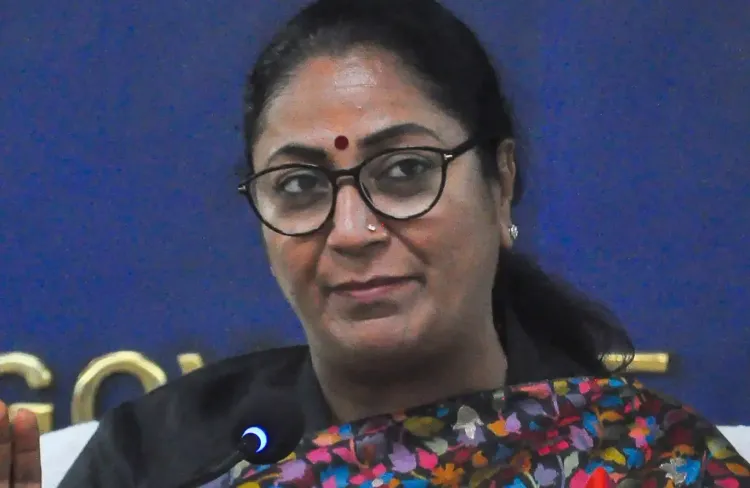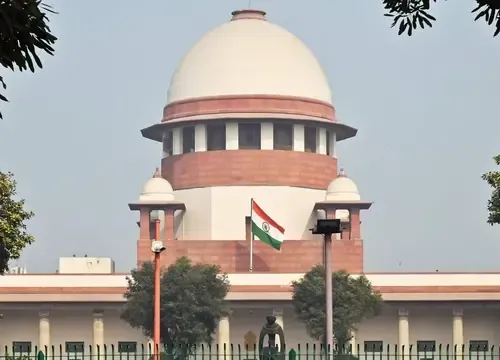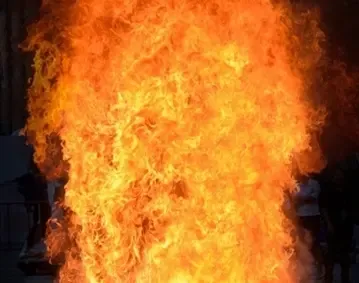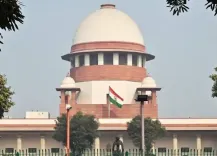Will Delhi Experience Artificial Rain on October 29?

Synopsis
Key Takeaways
- First artificial rain planned for Delhi on October 29.
- Tests conducted successfully in the Burari area.
- Cloud seeding aims to improve air quality through scientific methods.
- Government initiatives include enhanced monitoring and enforcement.
- Collaboration with IIT Kanpur for continued innovation in environmental strategies.
New Delhi, Oct 23 (NationPress) The Chief Minister of Delhi, Rekha Gupta, announced that specialists conducted tests in the Burari neighborhood on Thursday aimed at facilitating artificial rain around October 29.
In anticipation of the city's inaugural cloud seeding initiative to scientifically tackle air pollution, CM Gupta remarked, “Provided that the weather conditions are favorable, Delhi is set to witness its first artificial rain on October 29.”
“Preparatory actions have been finalized for this pioneering artificial rain project through cloud seeding in Delhi. Experts successfully executed tests today in the Burari area. The meteorological department has forecasted the likelihood of cloud formation on October 28, 29, and 30,” she conveyed via her X platform.
She emphasized, “This initiative is not only a significant technical milestone but also aims to establish a scientific approach to combating pollution in Delhi.”
The Chief Minister added, “The government’s goal is to ensure cleaner air in the capital and maintain a balanced environment through this innovation. I extend my best wishes to our cabinet colleague Shri mssirsaji and all officials involved in making this endeavor a success.”
Previously, Sirsa stated that the intensified winter enforcement drive has begun to show measurable results, with the AQI dropping by 50 points in just one day.
“Delhi’s AQI has significantly improved — the current level of 305 is nearly 50 points lower than yesterday’s 353. The city is responding positively to our swift and coordinated efforts,” Sirsa remarked following a review meeting.
He instructed departments to maintain this momentum by focusing on identified pollution hotspots, ensuring inter-agency collaboration through the Green War Room.
“Approximately 2,000 teams are actively working day and night. Delhi’s strategy isn’t confined to winter — it’s a continuous, year-round governance model that prioritizes data, accountability, and citizen engagement,” Sirsa noted.
He further mentioned that while current efforts are yielding results, the government is also preparing for future measures.
“Our initiatives extend beyond the present — we’re laying the groundwork for the future. Plans are underway to procure 70 additional mechanized sweepers, 70 more anti-smog guns, water sprinklers, and 140 litter pickers, covering 1,440 km of roads. We’re fostering innovation through Delhi’s Clean Air Challenge, and cloud seeding will soon be conducted in partnership with IIT Kanpur and IMD,” Sirsa elaborated.
Detailing the Delhi government’s Comprehensive Enforcement Deployment, Sirsa stated that as part of dust and construction management, 200 day teams and 178 night teams (comprising over 970 personnel) are assigned to monitor compliance with dust and construction regulations.
Sites exceeding 500 sqm are under strict surveillance. The MCD, PWD, DDA, DSIIDC, and CPWD are leading these efforts with GPS-tracked sweepers and daily reports to the Green War Room,” the statement read.
Claiming notable success in curbing open burning, the Minister reported that 230 day and 213 night patrols (totaling 443 teams) with over 1,200 personnel are actively working against garbage, leaf, and biomass burning. These teams are deployed by MCD, DDA, DSIIDC, and the Revenue Department.









